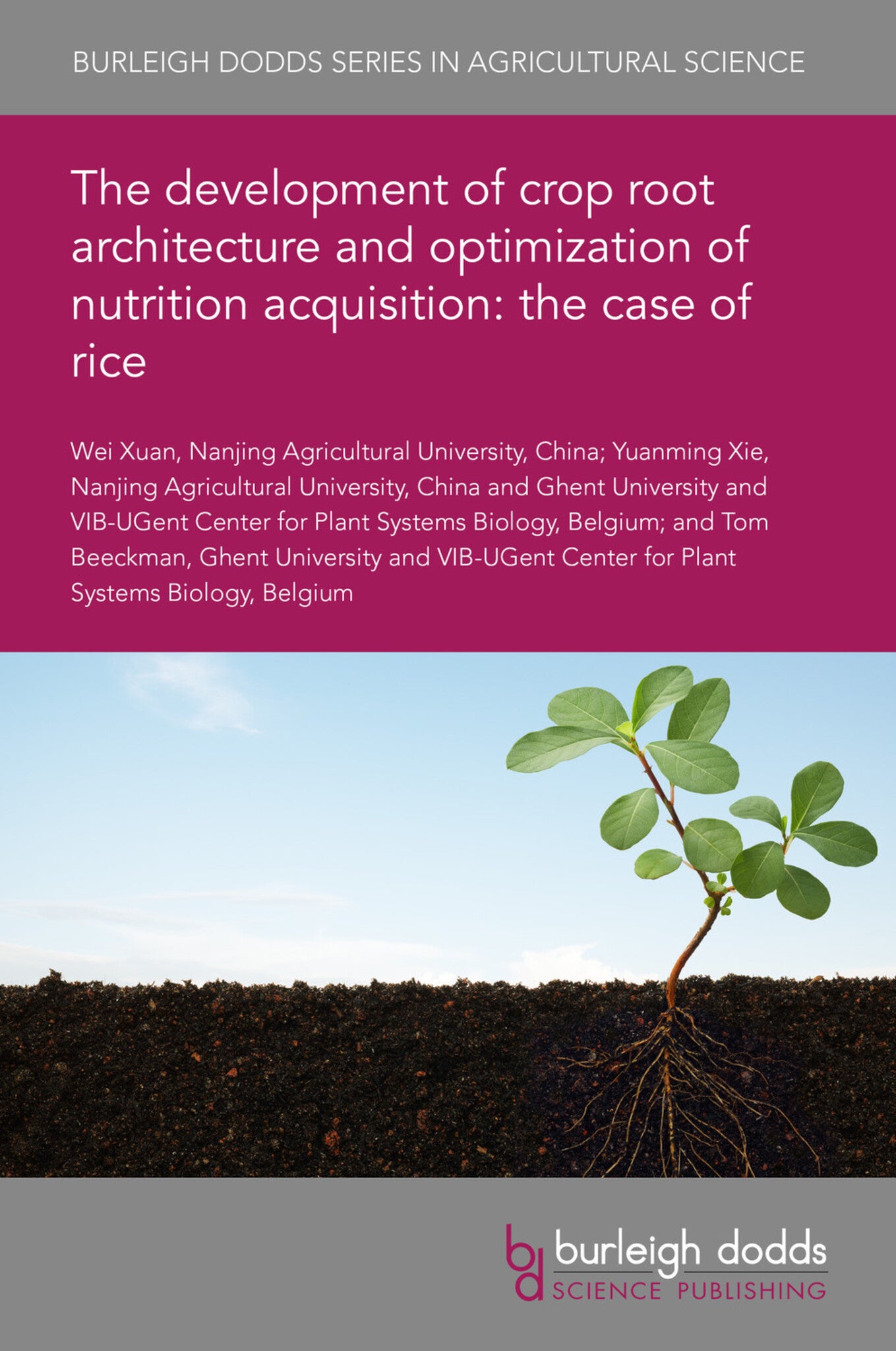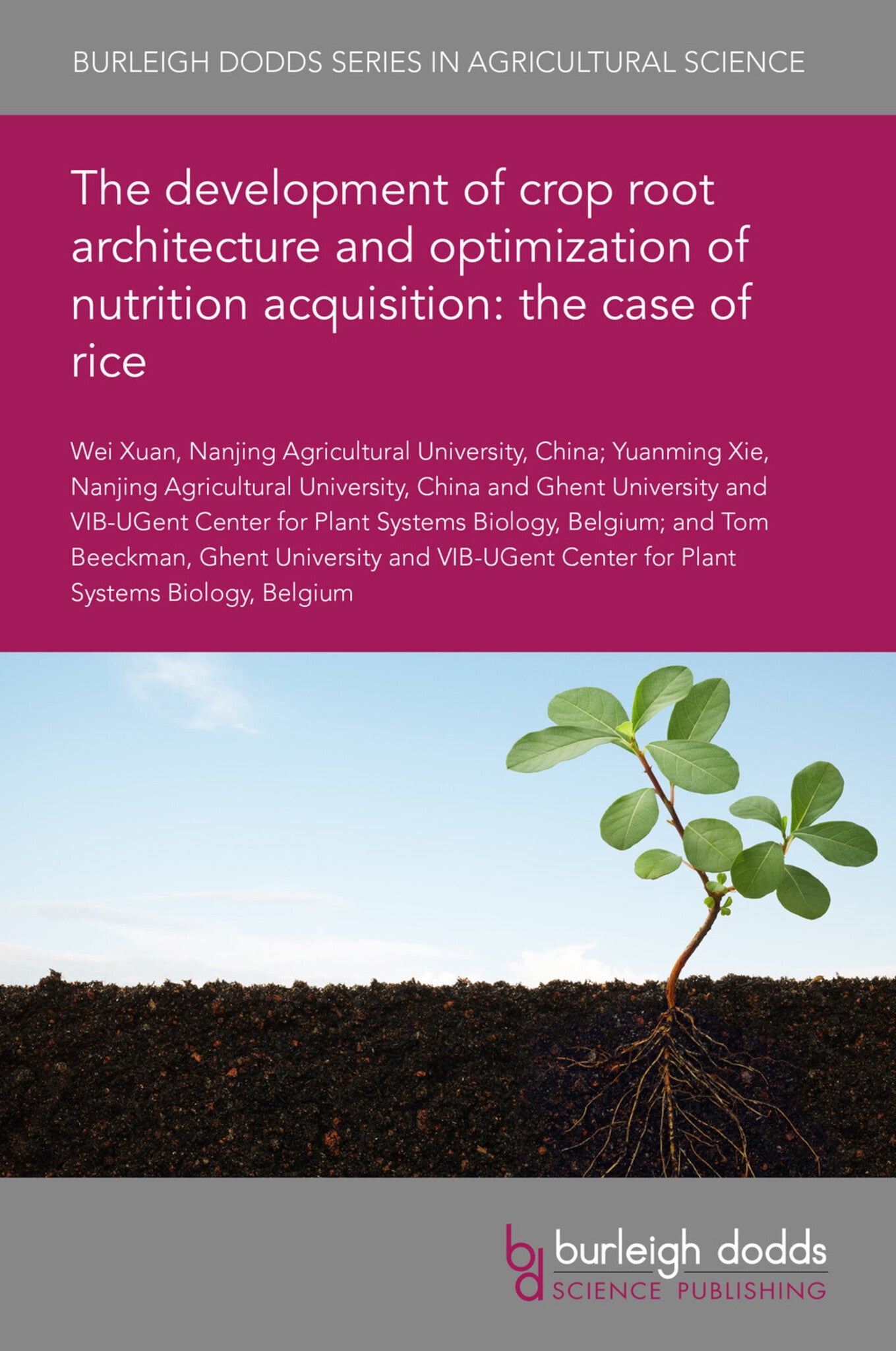We're sorry. An error has occurred
Please cancel or retry.
The development of crop root architecture and optimization of nutrition acquisition: the case of rice
Regular price
£25.00
Sale price
£25.00
Regular price
£0.00
Unit price
/
per
Sale
Sold out
Re-stocking soon
Plant root system architecture (RSA), the spatial configuration of a root system in the soil, is critical for water and nutrient acquisition. Rice generates a root system consisting of seminal, lat...
Read More

Some error occured while loading the Quick View. Please close the Quick View and try reloading the page.
Couldn't load pickup availability
- Format:
-
18 January 2021

Plant root system architecture (RSA), the spatial configuration of a root system in the soil, is critical for water and nutrient acquisition. Rice generates a root system consisting of seminal, lateral, and crown/adventitious roots, whose growth and development are regulated by plant hormones and can be fine-tuned to meet adverse environmental conditions. A broad range of studies have been carried out in the past to decipher the underlying molecular and genetic mechanisms. This chapter summarizes original and more recent findings on genes and molecules identified so far to be involved in rice root development. It also discusses the cellular organization and function of rice roots, as well as the responses of RSA to the availability of water and nutrients.

Price: £25.00
Publisher: Burleigh Dodds Science Publishing
Imprint: Burleigh Dodds Science Publishing
Series: Burleigh Dodds Series in Agricultural Science
Publication Date:
18 January 2021
ISBN: 9781786769909
Format: eBook
BISACs:
TECHNOLOGY & ENGINEERING / Agriculture / Agronomy / Crop Science, Agronomy and crop production, TECHNOLOGY & ENGINEERING / Agriculture / Sustainable Agriculture, Sustainable agriculture

1 Introduction 2 Rice root architecture and cellular organization of the rice root 3 Hormone regulation of rice root development 4 Control of rice root development by other pathways 5 Adaptation of RSA to environmental conditions 6 Future trends in research 7 Where to look for further information 8 Acknowledgement 9 References



